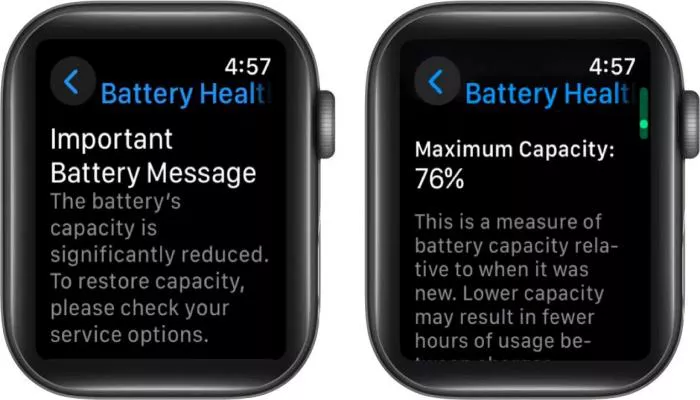As Apple prepares to launch its 11th-generation Apple Watch, battery life remains a common concern among users. Over time, battery health naturally deteriorates, leading to shorter usage periods. If your Apple Watch isn’t holding a charge like it used to, it may be time to assess its battery health.
Understanding Apple Watch Battery Health
Battery health refers to the current charge capacity of your Apple Watch compared to its original state when new. Chemical aging from repeated charging cycles gradually reduces maximum capacity. For instance, a battery showing 85% maximum capacity can now hold only 85% of its original charge.
How to Check Battery Health on Your Apple Watch
Monitoring your Apple Watch’s battery health is straightforward:
- Open the Settings app on your Apple Watch.
- Scroll down and select Battery.
- Tap Battery Health.
If the battery is severely degraded, an Important Battery Message will appear, recommending service. Otherwise, check the Maximum Capacity percentage to gauge its condition.
Interpreting Battery Health Percentages
90%–100%: Optimal performance; no immediate action needed.
80%–89%: Normal wear; battery still functions well.
Below 80%: Consider replacement due to diminished performance and shorter lifespan.
Tips to Extend Apple Watch Battery Life
While battery aging is inevitable, these practices can help prolong its health:
- Avoid extreme temperatures, as heat and cold accelerate degradation.
- Enable Optimized Battery Charging to reduce wear by learning your charging patterns.
- Lower screen brightness and disable the Always-On Display to conserve power.
- Keep watchOS updated for ongoing battery efficiency improvements.
When to Replace Your Apple Watch Battery
Apple advises replacing the battery once health falls below 80%. Key warning signs include:
- Rapid battery drain (e.g., full charge depleting unusually fast).
- Unexpected shutdowns, indicating the battery can’t sustain normal operation.
- ”Battery Health Significantly Reduced” alert, signaling replacement is necessary.
By staying proactive, you can maximize your Apple Watch’s performance and longevity.


